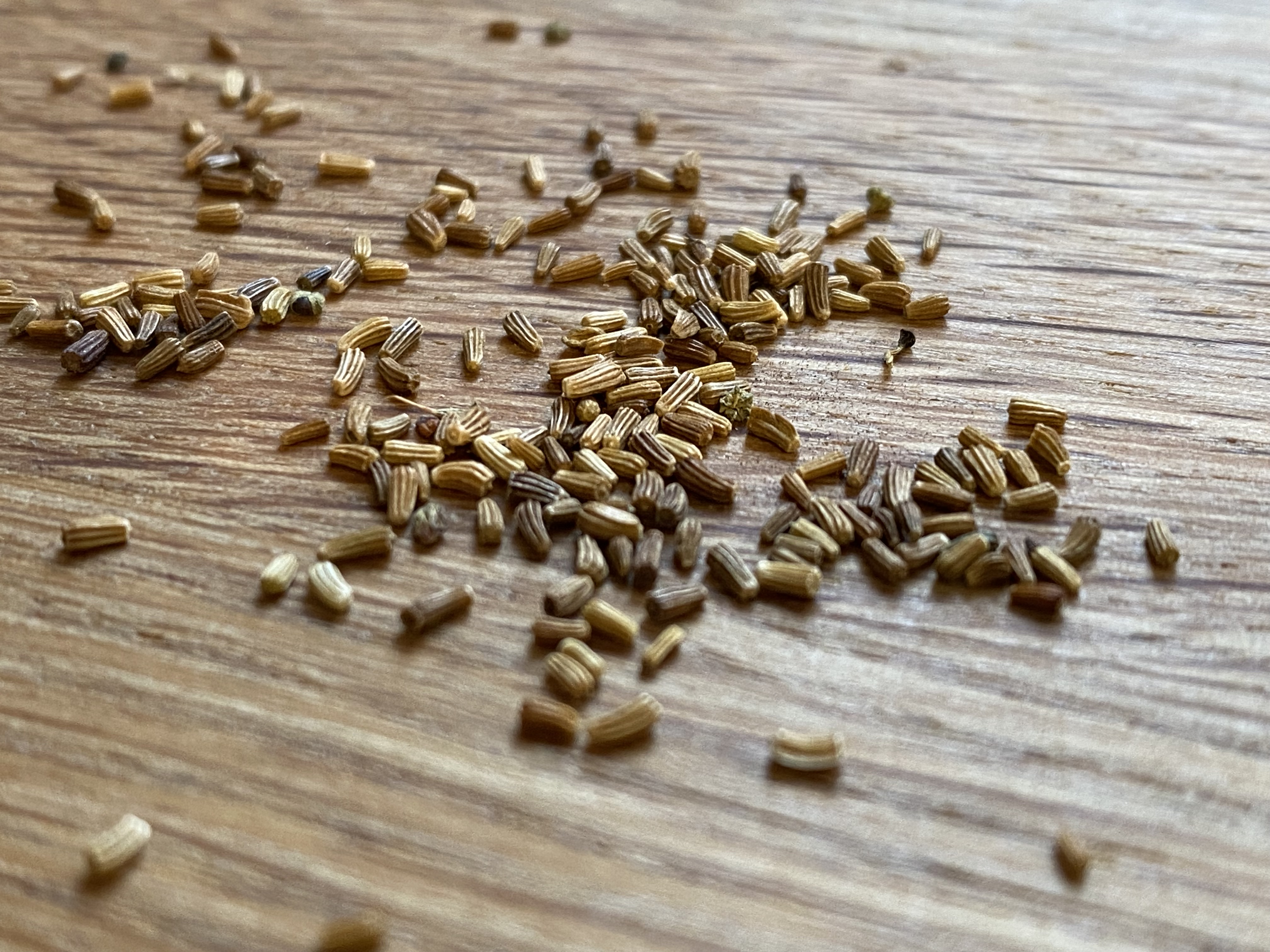Corn Marigold Wildflower Seed | Bright Yellow Daisy-Like Blooms
Key Features:
- Corn Marigold wildflower seed (Chrysanthemum segetum)
- Beautiful, bright yellow, daisy-like flowers
- Long flowering period from June to September
- Attractive nectar source for pollinators
- Fast-growing annual species
- Ideal for sunny wildflower areas and borders
- Sow rate: 1 gram per square metre
Description: Vibrant Colour and Cornfield Authenticity
This fast-growing annual produces beautiful, vibrant yellow, daisy-like flowers on long stems, creating a cheerful display throughout the summer months. Perfect for sunny wildflower sections or herbaceous borders, Corn Marigolds are also a valuable source of nectar for pollinators.
While adaptable, Corn Marigolds thrive in well-drained, moderately fertile, neutral to acidic, light soils and particularly appreciate spring planting. (Christina's Tip): For the best natural effect and continuous blooms, we always sow these alongside our Cornflower and Corncockle seeds.
As an annual, Corn Marigold will require reseeding each year for continued blooms, but its striking colour makes the effort well worth it!
Sowing Information:
- Latin Name: Chrysanthemum segetum
- Position: Full sun
- Soil: Well-drained, moderately fertile, neutral to acidic, light soil
- Sow: March-May or Mid September - October
- Flowering Period: June to September
- Height: 20-50cm (approximately)
- Rate of Growth: Fast-growing
When and How to Sow Your Wildflower Seeds
Getting a vibrant wildflower display is easier than you might think! Here's a simple guide to help you succeed, even if you're new to gardening.
When to Sow
You have two main windows for sowing your wildflower seeds:
- Spring/Summer: From March to mid-May.
- Autumn: From August to October.
Try to avoid sowing when frost is expected or during very dry, drought-like conditions, as this can affect germination.
Getting the Sow Rate Right
For our 100% wildflower mixes, the recommended sowing rate is 1.5 to 3 grams per square metre.
- Why this rate? It's a careful balance! Sowing too much seed can lead to stronger, more dominant species out competing the others, reducing your mix's diversity. Sowing to little might leave too much space for weeds or grasses to take over.
- Handy Tip: A level teaspoon of wildflower seed is roughly 1.5 grams.
What to Expect From Your Wildflowers
The magical transformation of your wildflower patch will unfold over time, depending on the types of seeds in your mix:
- Annuals: If your mix includes annual species, you'll see them bloom beautifully within 8-10 weeks if sown in spring. If you sow them in autumn, they'll flower the following summer.
- Perennials: These longer-term beauties typically begin to flower in the second year after sowing. Don't be surprised if Oxeye Daisy and/or Wild Carrot are the stars of the show in that second summer. The other lovely perennials will become more prominent from year 3 and 4, returning year after year to create an increasingly diverse display.
You can always check the specific "mixture details" under the product description on our website to see if your chosen mix includes annuals, perennials, or both.
Ground Preparation: The Essential First Step
Proper ground preparation is key to giving your wildflowers the best start.
Whether you're using pots or preparing a garden bed, ensure you remove any existing weeds and grass beforehand. This way, your precious wildflower seeds won't have to fight for space and nutrients, helping them establish successfully.
Sowing Your Seeds
Once your ground is ready, follow these simple steps for sowing:
- Prepare the Seedbed: Gently rake your prepared area to create a fine, firm, level seedbed. This provides the perfect surface for your tiny seeds.
- Mix and Scatter: If you're using a carrier (which we recommend for an even spread), mix your seeds with a bulking agent like sand, sterile compost, or instant porridge. Then, scatter the mixture evenly over your seedbed.
- Good Seed-to-Soil Contact: Lightly rake, roll, or even gently walk over the area. The goal here isn't to bury the seeds deep but rather to lightly push them into the soil to ensure they have good contact with the ground.
- Water Gently: Finish by watering lightly, being careful not to wash the seeds away.
Ongoing Maintenance
Once your wildflowers have bloomed and the season is ending:
- In the autumn, cut the plants back to about 7cm in height.
- Remove the cuttings from the area. This is an important step to help keep the soil fertility low, which is ideal for encouraging wildflowers to thrive and preventing more dominant grasses from taking over.


